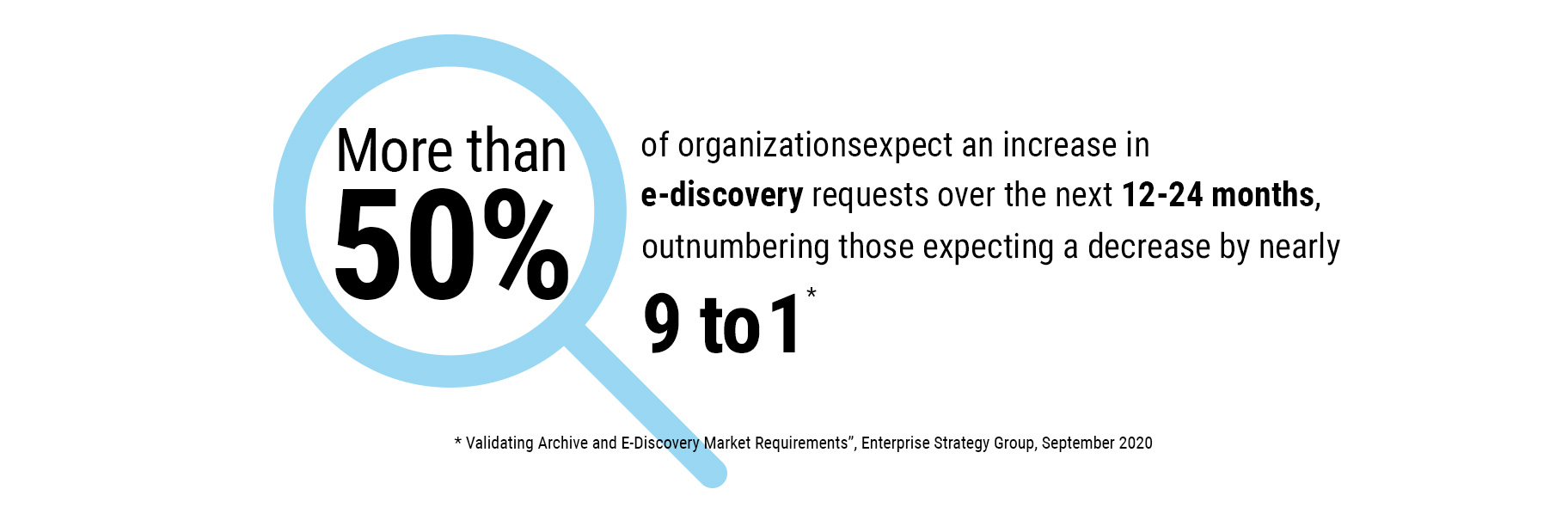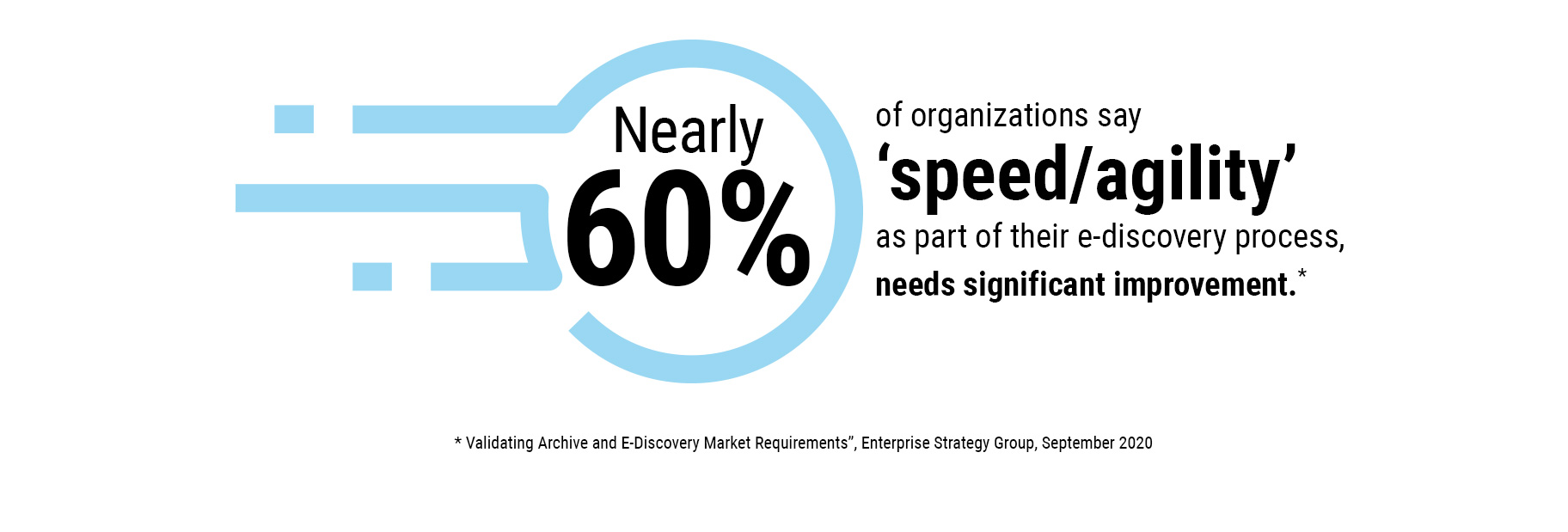“Litigation readiness”—the ability to respond in a timely fashion to e-discovery requests—is little more than an aspiration for many organizations these days. Between the growing volume of communication and the number of data requests, it’s becoming increasingly more difficult for organizations to perform electronic discovery (e-discovery) and manage the various processes involved within it effectively.
E-discovery is the process of searching for and producing relevant and non-privileged electronically stored information (ESI) in response to internal or government investigations, audits, litigation or data requests. (A Freedom of Information Act (FOIA) request in the U.S. is an example.) And research by analyst firm Enterprise Strategy Group (ESG) has uncovered some eye-opening insights about the e-discovery challenges that many organizations face.

The need to respond to requests quickly, accurately and confidently
To facilitate e-discovery for time-sensitive requests, you and your team need a tool that will allow you to orchestrate responses and optimize your workflow’s critical processes with ease. The following example helps to illustrate why.
Imagine this: You’re the general counsel for one of the world’s largest banks, getting ready to sign out and enjoy a long weekend. An email pops up on your smartphone, and you think, “OK, let me take a look at this one last message before I go.” But as soon as you read the first two sentences, this seemingly innocuous email has made your head spin: You’ve received a data request from the U.S. Securities and Exchange Commission (SEC) about an insider trading investigation. Data pertaining to a specific employee must be handed over for further investigation—and within a short time frame.
You immediately call for a quick huddle with the litigation support team, who will assist you in crafting the search to obtain the required data. You also call in the lead IT admin, who will run the search query to get to the required data. And you bring in your legal team, including paralegals and other staff members who will perform a high-level data review.
This cross-functional team can help you with an early case assessment to understand the facts in the SEC investigation and the potential risks involved. But do you have the right technology and processes in place to respond accurately and confidently to the SEC’s request, especially with a deadline to produce information before the end of the following week?
Overcoming e-discovery pains and improving litigation readiness
As a product manager, I take pride in talking with customers, prospects and partners to understand their jobs better, so I can identify the e-discovery challenges and pressure points that plague them most. I hear how difficult it is to share only pertinent case data with reviewers without granting them broader e-discovery access. Or how it’s cumbersome to coordinate with stakeholders spread across various departments. Other common laments include painfully slow searches, which can sometimes take days or longer to deliver results, and skyrocketing litigation costs, both internally and externally.
Do any of these issues sound familiar? If so, here’s some good news: You can overcome all the e-discovery pains described above—and more—and improve your litigation readiness with Case Management, a feature of Proofpoint Discover (formerly Proofpoint E-Discovery Analytics).
Case Management makes team collaboration and data sharing easier. You can add various users to a case, giving them access to case data without the need to share it with each user individually. And Case Management’s iterative search-within-search capabilities, data visualizations and machine learning, and algorithm-based predictive coding can help you focus on relevant data only.
With Case Management, you can reduce the volume of data you need to review as responsive or not. Ultimately, that can help your organization reduce the time and money it needs to spend on data review, which tends to be the most expensive step in the e-discovery process.
I’ll stop here for now, but there’s plenty more to share. Until then, keep working toward litigation readiness!
Learn more about simplified e-discovery with Proofpoint Discover in this data sheet.
Subscribe to the Proofpoint Blog


